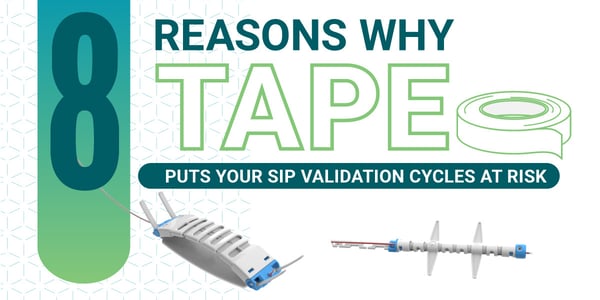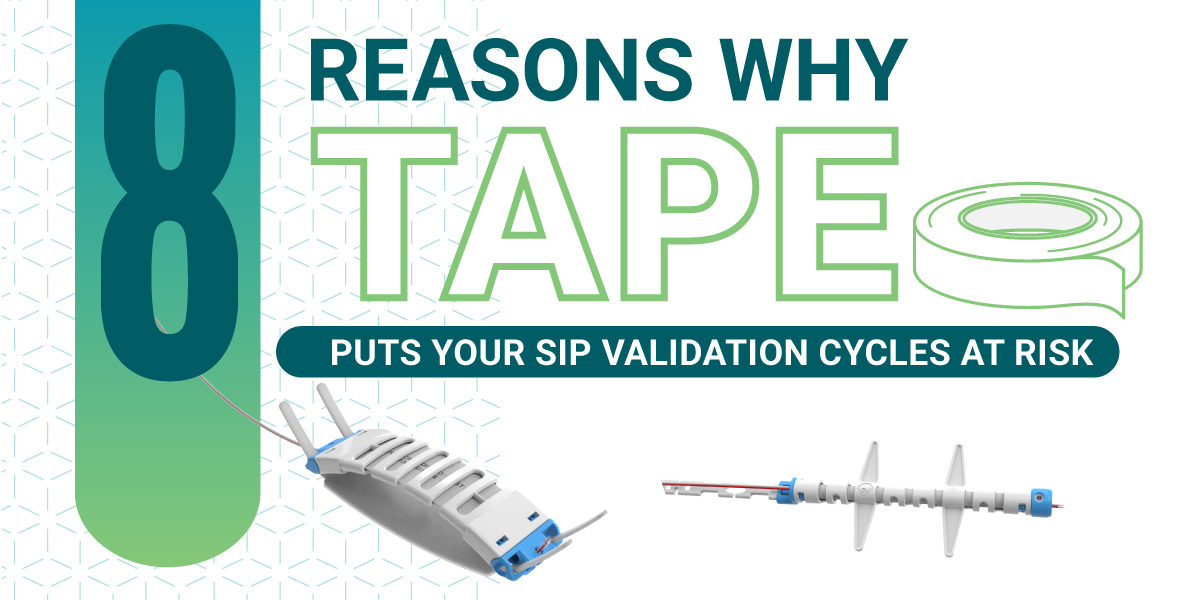
8 Reasons Why Tape is Putting Your Sterilize in Place (SIP) Validation Cycles at Risk

When it comes to Sterilize in Place (SIP) validation cycles, every detail matters. From precise positioning to ensuring the integrity of biological indicators, any deviation can lead to inaccurate results and potential risks to the process. Unfortunately, relying on tape for positioning during SIP validation can introduce a multitude of problems, ultimately compromising the validity of the process. Here are the top nine reasons why tape should be avoided during SIP validation cycles:
Reproducibility of Positioning Not Under Control: Tape lacks the precision and control needed to ensure consistent positioning of biological indicators and thermocouples. This inconsistency can lead to variations in results between validation cycles, undermining the reliability of the entire process.
Obstruction of Process Flows: Tape can obstruct process flows, interfering with the sterilization process and potentially compromising the efficacy of the cycle. This obstruction not only affects the validation results but also poses risks to product safety and quality.
Shredding of Biological Indicators: Improper application of tape can lead to shredding of biological indicators, rendering them ineffective and invalidating the validation cycle. The integrity of the indicators is crucial for accurately assessing the sterilization process. Also, if the spore strip shreds there would be parts of it that could clog system components and potentially microorganisms spread throughout the system.
Ink Remnants from Spore Strips (BIs): Ink applied to the spore strip packaging for identification purposes may leave remnants when removed from surfaces. These remnants can contaminate the environment and skew validation results if not properly addressed.
Tape and/or Glue Remnants: Residual tape or glue left behind after removing positioning materials can introduce contaminants into the system, potentially compromising the validity of the validation cycle and raising concerns about product safety.
Stress on Thermocouples: Improper application of tape can exert stress on thermocouples, affecting their accuracy and reliability. This stress can lead to inaccurate temperature readings, undermining the integrity of the validation process.
D-value Altering: Accurate determination of D-values is essential for evaluating the effectiveness of sterilization processes, necessitating precise placement of biological indicators. If tapes obstruct the Biological Indicator, they may alter its D-value by impeding steam access to the spores on the strip. Consequently, if manufacturers' D-values are used, the resulting data may lack accuracy.
Biological Indicator (Cross) Contamination: When removing a Biological Indicators taped to a surface, tearing the glassine envelope is possible, potentially contaminating the Biological Indicators. This can lead to a false positive result or contaminate the system if surviving spores are present on the Biological Indicators.
In conclusion, while tape may seem like a convenient and affordable solution for positioning during SIP validation cycles, its use can introduce a myriad of issues that compromise the reliability and validity of the process. To ensure accurate and reproducible results, it's essential to invest in dedicated solutions like MeCo. By adopting MeCo’s precise positioning capabilities and advanced technology now, you can prevent costly and time-consuming problems, avoiding the need for reactive measures. As the saying goes, 'an ounce of prevention is worth a pound of cure.' With MeCo, you ensure confidence in your SIP validation processes by being proactive, not just reactive.